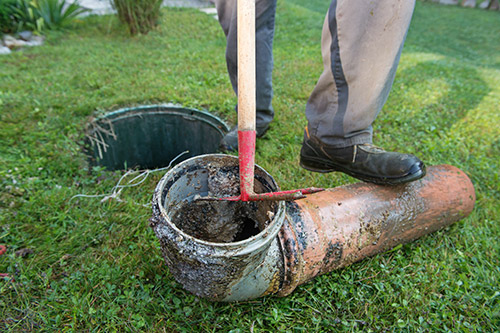
Keep these clean water tips in mind to keep everything flowing.
1. Ask Questions
Before buying property with a well and septic system, it’s important to get it inspected and ask questions. You might get lucky and find that the previous owners have records of how the well and septic systems were built and who maintained it. Make sure you:
- Know where the septic tank and drainfield are.
- Know where the wellhead is. It should be uphill and away from the septic system.
- Verify which tests your state requires.
Get the well water professionally tested for total coliform bacteria, nitrates, total dissolved solids, and pH levels. Call your local health office or the EPA to find a certified water testing lab.
2. Test the System Every Year
Even if it’s not required, annual well pump and equipment inspections are a low-cost way to make sure everything is working as expected. A local septic system company can check the pressure in your expansion tank. Your well pump will stop and start more often than necessary without the proper pressure or due to a failing well pump pressure switch, which can lead to premature failure of the pump. A well maintenance company near you can make sure the equipment is in good condition, perform repairs, and check the water quality.
But don’t wait for the annual inspection and call your for service if you:
- Suspect a bacteria problem
- Notice a change in well water pressure or flow
- Notice a change in taste, color, or smell of water
- Notice an increase in construction or industrial activity in your neighborhood
3. Be Careful About What Goes Down the Drain
When living with a septic tank, everything that goes down the drain goes into the septic system, so be careful of what you rinse or flush down your drains.
Keep leftover paint, automotive fluids, and cleaners out of your drains. These products lead to build up that will eventually need to be pumped out. Additionally, they can affect the beneficial bacteria that live in the septic system and make it work. Choose enzyme cleaners when needed to help break down organic material without harming the bacteria at work in the tanks.
4. Avoid Using the Garbage Disposal
Garbage disposals and septic systems don’t get along well. Garbage disposals can allow too much solid matter into the system. It just increases the need for pumping. Scrape plates and cutting boards into a compost pail instead.
A backyard compost solution is a great alternative to a garbage disposal. It keeps kitchen grease, vegetable scraps, and chunks of meat out of your septic system and can provide beneficial nutrients to your vegetable garden.
5. Keep the Lid on the System
The septic system lid needs to stay on at all times, otherwise there’s a risk of people falling in, and it’s not the cool underworld you’ve seen in cartoons—it’s incredibly dangerous. Periodically check on the condition of the lid to make sure it’s secure and not cracked or deteriorated.
Check the wellhead to ensure the well cap and seals are tight. Any vents should have screens to prevent critters from getting in, and the concrete slab must be in good shape to prevent groundwater from collecting around the well.
6. Conserve Water
Using less water is not only a good conservation practice, but it will also extend the life of your system. It’s easy for septic systems to get overloaded, so give them a break and space out water use. Try to avoid doing weeks’ worth of laundry on one Saturday, and certainly don’t drain the hot tub the same weekend.
Your well is going to be affected by the amount of water in the ground. In times of drought, the water table—or the level of the water below ground—is lower. When the water level dips below the pump’s location, it’ll just pumpt air. So conserve groundwater by:
- Taking shorter showers
- Running only full loads of dishes or laundry
- Using the small load setting when the machine isn’t full
- Installing low-flow toilets
- Checking for hidden leaks in your bathroom
7. Protect the Drainfield
The drainfield is the part of the yard where pre-treated water flows through the soil and sediment on its way back to the groundwater. The septic system’s drainfield is a fragile area that needs TLC.
- Don’t drain pools in the drainfield
- Don’t park cars in the area
- Divert rainwater or snowmelt away from the drainfield
- Keep trees 100 feet away from the drainfield. Tree roots invading the septic system can cause backups and damage.
- You can landscape the area with shallow-rooted flowers or grass. But avoid covering the area with plastic weed guards, gravel, or concrete patios.
8. Protect the Well
The drainfield is the part of the yard where pre-treated water flows through the soil and sediment on its way back to the groundwater. The septic system’s drainfield is a fragile area that needs TLC.
- Ideally, the wellhead is located uphill from the septic drainfield, and groundwater does not come into contact with it. Keep animal waste, garden fertilizer, and any other potential contaminants that you wouldn’t want in your drinking water at least 100 feet from the well.
- For more information, contact Morse Engineering and Construction.
Source: angi.com
